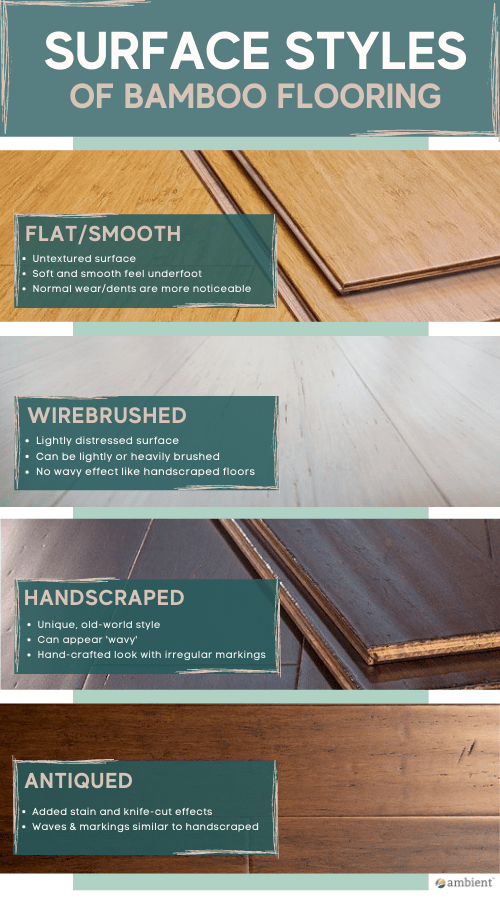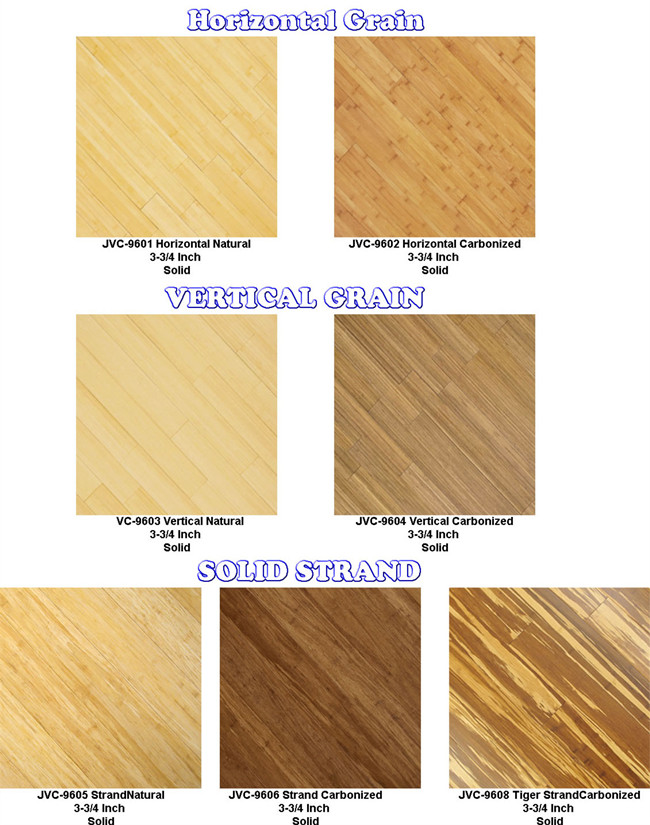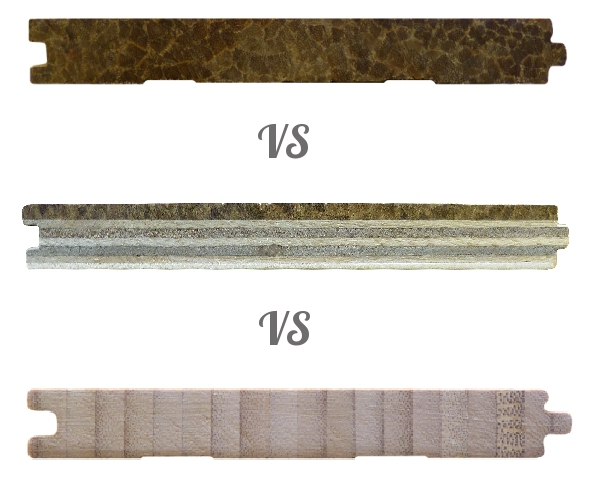Bamboo flooring has become a popular choice for homeowners looking for eco-friendly and stylish alternatives to traditional hardwood. With its natural beauty, durability, and sustainability, bamboo offers a variety of options that cater to different tastes and needs. However, not all bamboo flooring is the same. Depending on how the bamboo is processed and treated, you can end up with vastly different types of flooring, each with its unique characteristics, benefits, and downsides. Understanding the differences between these types can help you make an informed decision about which one is the best fit for your space and lifestyle.
Images about Different Types Of Bamboo Flooring
Different Types Of Bamboo Flooring

The first and most common type is horizontal bamboo flooring. This type is made by gluing strips of bamboo together in a way that showcases the natural grain and “knuckles” of the bamboo plant, which are the unique nodes found along the stalk. This type of flooring provides a more traditional, natural look with its bamboo stalk pattern visible across the planks. It’s great for those who want to embrace the natural aesthetic of bamboo, but its softer composition means it may not be as durable as some other options. Horizontal bamboo works best in low-traffic areas of the home, where it’s less likely to experience wear and tear.

Vertical bamboo flooring, on the other hand, is constructed by gluing bamboo strips vertically, creating a more uniform and sleek appearance compared to the horizontal type. It lacks the distinctive knuckles and grain patterns, offering a cleaner, more streamlined look that some homeowners prefer for modern or minimalist designs. Vertical bamboo flooring tends to be slightly harder than horizontal bamboo because of its compressed nature, but it’s still not the hardest option available. It is a good choice if you like the idea of bamboo but prefer a subtler, less obvious wood grain.

For those seeking maximum durability, strand-woven bamboo flooring is the strongest and most resilient option. This type is made by shredding the bamboo fibers, which are then compressed under intense pressure to form a dense, tough material that can even outperform some hardwoods in terms of hardness. Strand-woven bamboo is highly resistant to dents and scratches, making it an ideal choice for high-traffic areas or homes with pets and children. It also has a unique appearance, with a more complex grain pattern that can resemble traditional hardwoods or even exotic woods, depending on how the fibers are arranged.
Another interesting option is engineered bamboo flooring, which combines a top layer of real bamboo with layers of other materials, such as plywood, underneath. This type of flooring is designed to be more stable in environments with fluctuating temperatures and humidity levels, making it a good choice for rooms like kitchens or basements where moisture can be an issue. Engineered bamboo is typically easier to install as well, with many varieties offering a click-lock system that doesn’t require glue or nails. This type of flooring offers the look and feel of bamboo with added versatility and stability.
A newer addition to the market is carbonized bamboo flooring, which goes through a special heat treatment process that gives the bamboo a darker, richer color. This process involves heating the bamboo until the sugars in the plant caramelize, resulting in a warm brown tone. While the aesthetic appeal is undeniable, carbonization does make the bamboo slightly softer and more prone to dents and scratches compared to non-carbonized options. That said, it can still be a great choice for homeowners who prefer the darker tones typically associated with hardwoods, as long as they are aware of its reduced hardness.
Last, there is fossilized bamboo flooring, which takes the durability of strand-woven bamboo to an extreme level. Fossilized bamboo undergoes even more intense pressure during manufacturing, resulting in an incredibly tough, almost indestructible material. This type of flooring is perfect for commercial spaces or homes that experience a lot of heavy traffic. It is also resistant to water, making it suitable for areas like bathrooms or kitchens where moisture might be a concern. Despite its toughness, fossilized bamboo retains the beauty and eco-friendliness of other bamboo flooring options, combining style with unparalleled strength.
Types of Bamboo Floors Ambient Building Products
Related Posts:
- Installing Solid Bamboo Flooring
- Cheap Bamboo Flooring
- Bamboo Flooring Durability Review
- Dark Brown Bamboo Flooring
- Scratch Resistant Bamboo Flooring
- Bamboo Floor Repair Dents
- Bamboo Patio Flooring
- Engineered Bamboo Flooring
- Decorating With Bamboo Floors
- Brown Bamboo Flooring
Bamboo flooring has become an increasingly popular choice for both commercial and residential settings. It combines the beauty of hardwood with the durability of ceramic tile and the flexibility of vinyl. Bamboo is also environmentally friendly, making it a great option for green building projects. With so many types of bamboo flooring available, it can be difficult to decide which one is best for your needs. In this article, we will explore the different types of bamboo flooring, as well as their benefits and drawbacks.
Types of Bamboo Flooring
There are three main types of bamboo floors: solid bamboo, strand-woven bamboo, and engineered bamboo. Let’s take a closer look at each one.
Solid Bamboo Flooring
Solid bamboo flooring is made from strips of solid bamboo that are glued together. The strips can be either vertical or horizontal grain and can be stained or finished in a variety of ways. Solid bamboo floors are extremely durable and are suitable for high traffic areas. They are also very easy to clean and maintain. However, they can be a bit more expensive than other types of bamboo flooring.
Strand-Woven Bamboo Flooring
Strand-woven bamboo flooring is made by weaving together strands of bamboo that have been placed in a form. This type of flooring is extremely durable and resistant to denting or scratching. It is also very attractive and comes in a variety of colors and finishes. Strand-woven bamboo floors are more expensive than solid bamboo floors but are still relatively affordable.
Engineered Bamboo Flooring
Engineered bamboo flooring is made by gluing together layers of compressed bamboo fiberboard with a veneer layer on top. This type of flooring is extremely durable and is suitable for heavy traffic areas. It is also easy to install and can be used over concrete subfloors without any additional preparation. Engineered bamboo floors come in a variety of styles and finishes and are typically less expensive than solid or strand-woven floors.
Benefits of Bamboo Flooring
Bamboo flooring offers many benefits beyond its aesthetic appeal. It is an extremely durable material that can withstand heavy foot traffic and everyday wear and tear. It is also resistant to water damage, making it ideal for bathrooms and kitchens. Bamboo floors are also environmentally friendly as they are made from a renewable resource that can be harvested without harming the environment. Additionally, they are easy to install and maintain, making them a great choice for DIYers.
Drawbacks of Bamboo Flooring
Although there are many benefits to using bamboo flooring, there are some drawbacks as well. Bamboo floors can be more expensive than other types of flooring and may require professional installation if it is not installed correctly. Additionally, some types of bamboo flooring may not be suitable for certain climates as it can warp or buckle due to moisture levels in the air. Finally, there are some concerns about the durability of strand-woven bamboo as it may not hold up as well as solid or engineered floors over time.
What is the best type of bamboo flooring?
The best type of bamboo flooring depends on your needs and preferences. Solid bamboo floors are extremely durable and easy to maintain, while strand-woven bamboo floors offer the highest level of durability but may not be suitable for certain climates due to their susceptibility to warping or buckling due to moisture levels in the air. Engineered bamboo floors offer a good balance between cost and durability but may not hold up as well as solid or strand-woven options over time.
How long does bamboo flooring last?
The lifespan of your bamboo floor depends on the type you choose, how well it is maintained, and the amount of foot traffic in your home or business. Generally speaking, solid or strand-woven bamboo floors can last 25-30 years or more with proper care and maintenance, while engineered boards typically last 10-15 years before needing to be replaced.


